This morning I traveled to the Lake Louise area to photograph a classic Canadian combination, mountains and trains. The trans-continental railway is an important part of the history of the country, built to link the country together and open up the West. The railroad was completed in 1885, commemorated by the driving of the Last Spike at Craigellachie, British Columbian on November 7, 1885. The railroad was built by the Canadian Pacific Railway company, still operating today and featured in one of today’s photos.
My first picture for today shows the Rocky Mountaineer, a passenger service that operates in summer between Calgary and Vancouver. The Rocky Mountaineer offers a scenic tour, replacing regular passenger service that was discontinued in 1990.
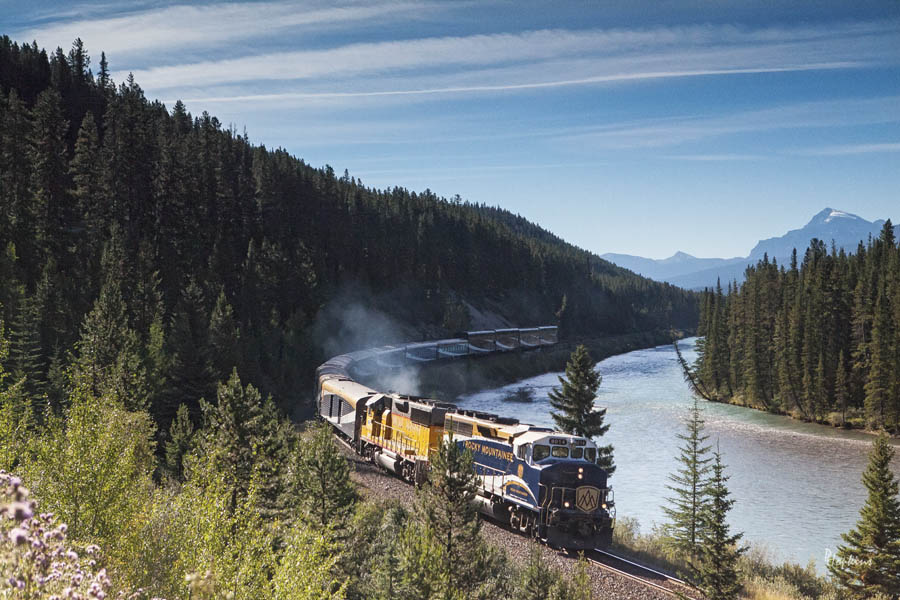
I took this photograph at a location well known to railroad buffs, Morant’s Curve. This curve is named for Nicholas Morant, a professional photographer based in Banff, Alberta. He was a commercial photographer of international repute and Canada’s premier railway photographer of the 20th century. Morant served as Special Photographer to the CPR from 1929 to 1935 and again from 1944 to 1981. His photographs of this location made it very well known to tourists, photographers and railroad enthusiasts. This morning, I took a panoramic photo of the curve, showing its entirety and the beauty of the surrounding landscape. (If you choose to wait for it, another picture of Morant’s Curve, taken early in the morning in winter appears in the revolving slideshow in the masthead at the top of the page.)

The curve follows the sweep of the Bow River on its way east (left) toward Calgary, 185 km distant. In the background are the mountain peaks surrounding Lake Louise, with Mount Temple (centre) prominent among them. While awaiting the arrival of the Rocky Mountaineer, I busied myself with taking pictures of the surroundings, including this next picture focused on Mount Temple.
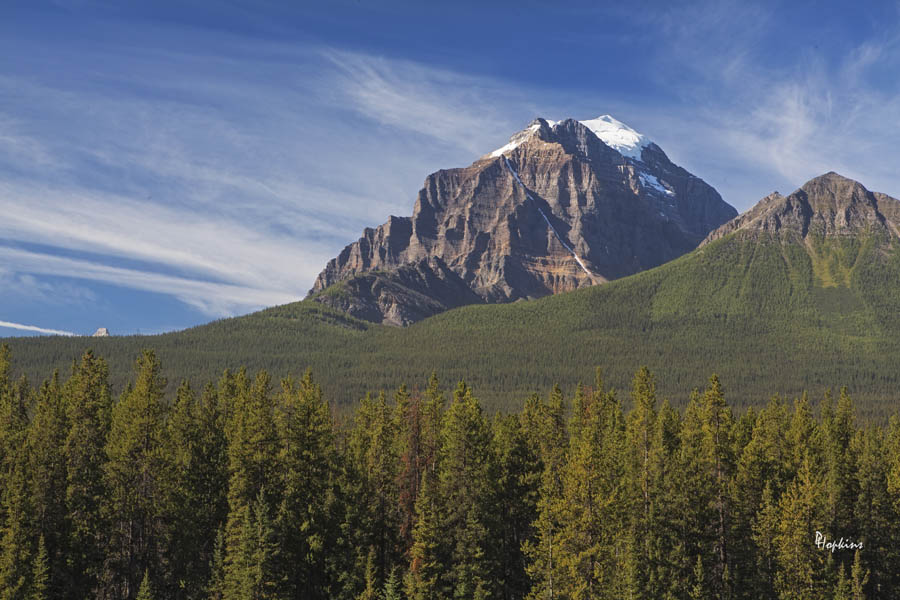
From Morant’s Curve I moved on to Lake Louise, a short distance to the west. I went to the town’s heritage railroad station with hopes of getting a shot of another train going by. I wasn’t disappointed. Within minutes of my arrival, along came a westbound freight train that I was able to capture as it passed the station.
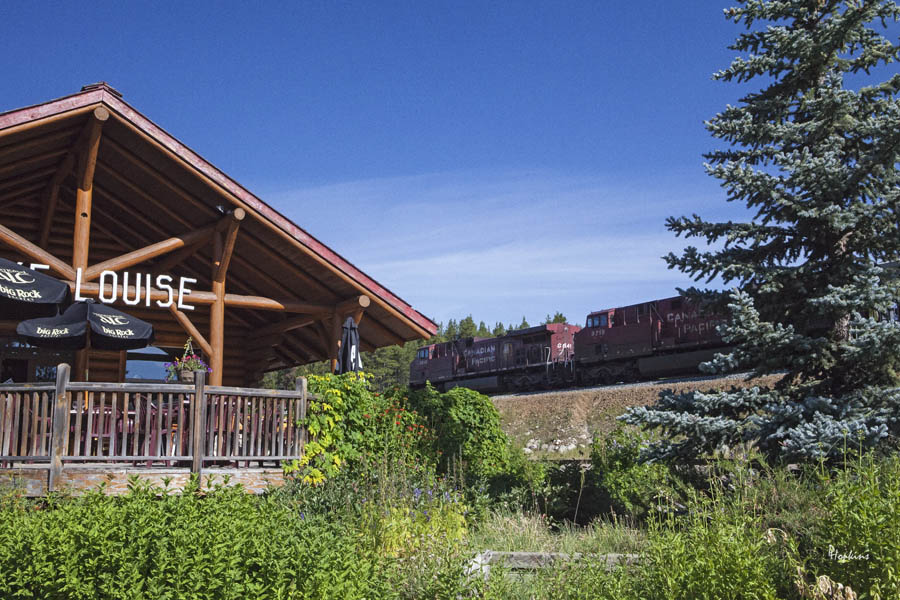
The station has been well preserved and looks much like it did when it last functioned as a passenger depot. Today, it’s a restaurant and a pleasant place to lunch if you don’t mind the occasional freight train rumbling by. Eat up and take in the history! A little further down the road, I got this next photo of another westbound freight train crossing the Pipestone River, just east of the station.
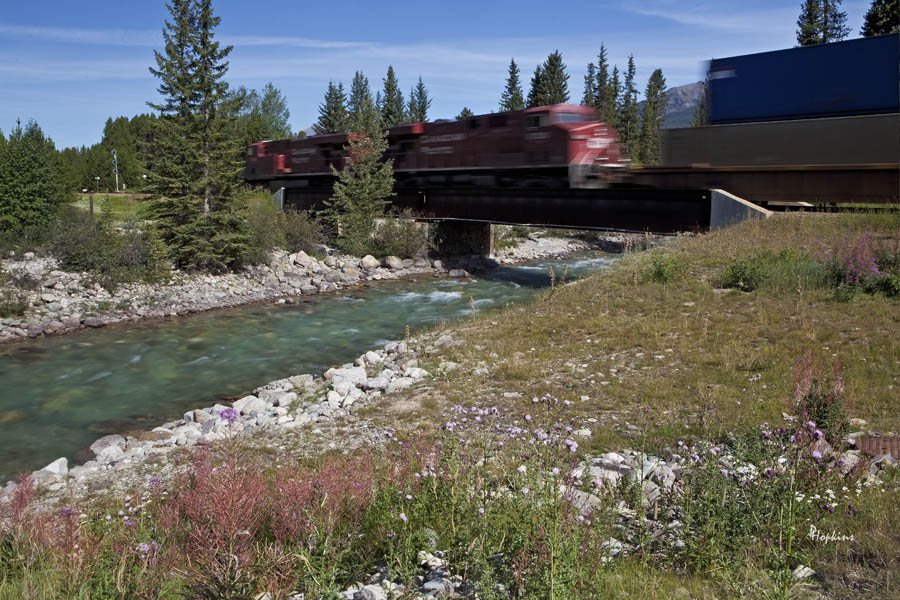
This photograph presented an unusual problem, too much light; the opposite of what I usually encounter. I wanted to capture some motion blur, to convey the sense of the train’s motion. The train was moving slowly and with such good light the shutter speed was very fast. If you look back to the previous picture of the train passing the station, the fast shutter speed “freezes” the train’s motion and it is not evident that it’s even moving. To get around this little problem, I closed the aperture down to f22 and reduced the camera’s sensitivity to ISO 50, it’s lowest setting. I was able to reduce the shutter speed to 1/10 th second and you can see a little motion blur. I would have preferred more but I would have needed a neutral density filter to further slow the shutter. Rather than do that and await another train, I decided to call it a day. I’ll know better next time.
As a fitting conclusion to this post, I include a picture taken inside the old railroad station, now a restaurant. While taking the pictures outside the station, I attracted some interest from a restaurant employee setting up umbrellas on the patio. She subsequently invited me inside for a look around where I got this last picture featuring a textured glass window behind the bar. Back to a low light environment! Rather than set up the tripod, I found a combination of aperture (f7.1) and ISO (3200) that gave me a fast enough shutter speed (1/320 th sec) to get a sharp picture. It helped to not try brightening up the scene, going with the subdued lighting in the room.
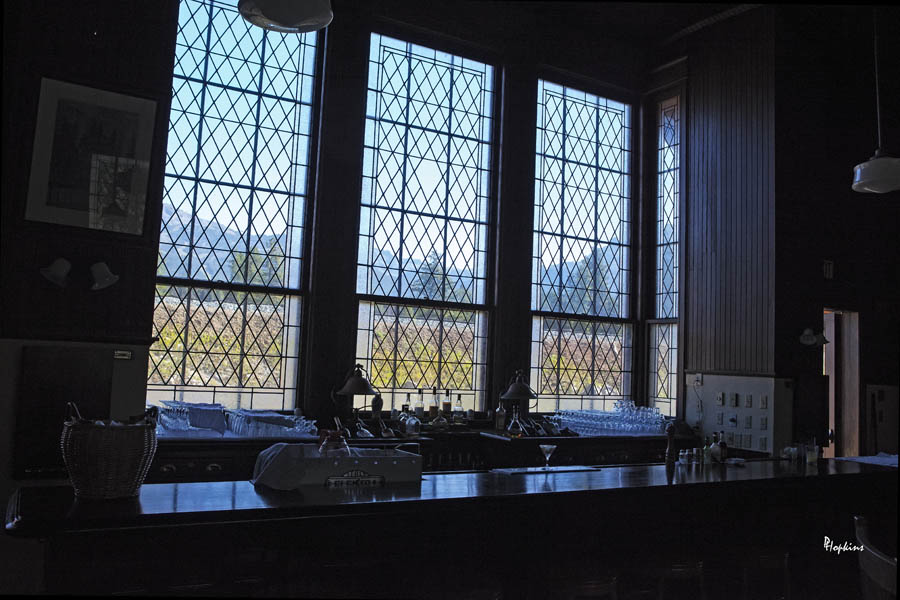

I love all your pictures! Jinette Lee forwards them to me. I worked with Jinette when she was in Kentucky. Miss her terribly. You are aware she is the funniest person on the planet? I have so enjoyed the places you have captured, and not only the photography, but the text you include with each shot. Your work is inspiring! Thank you!